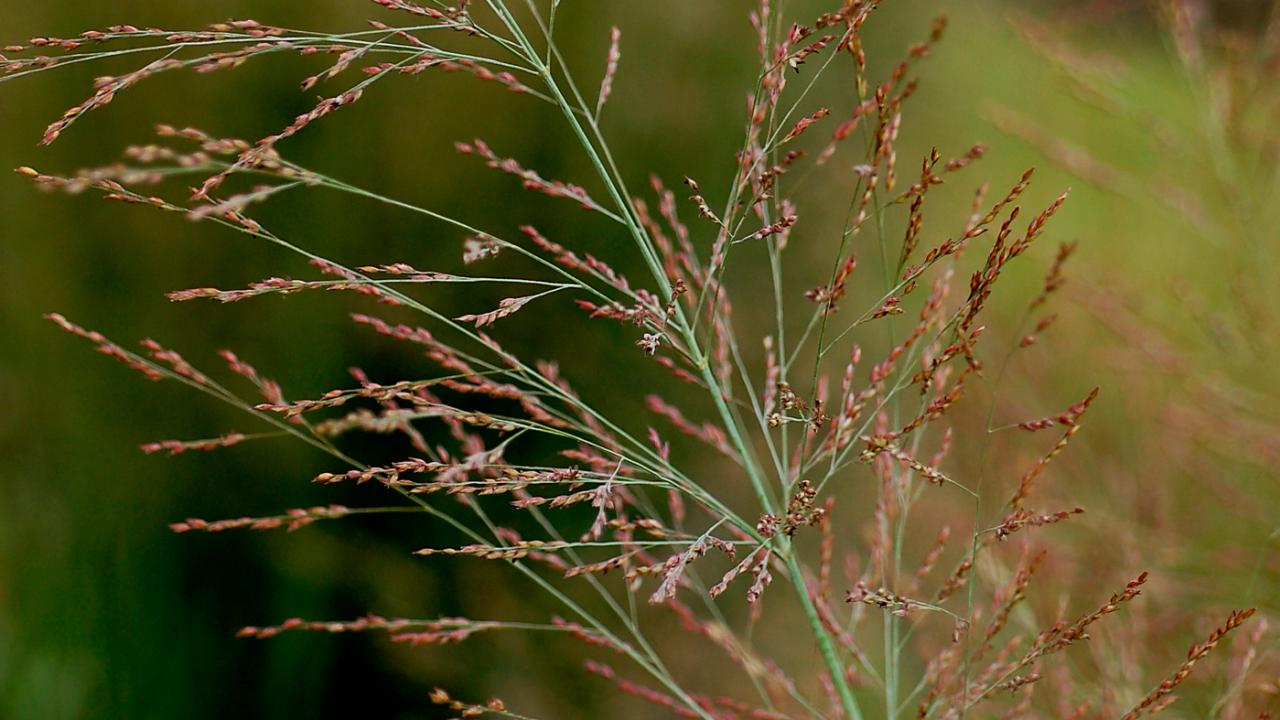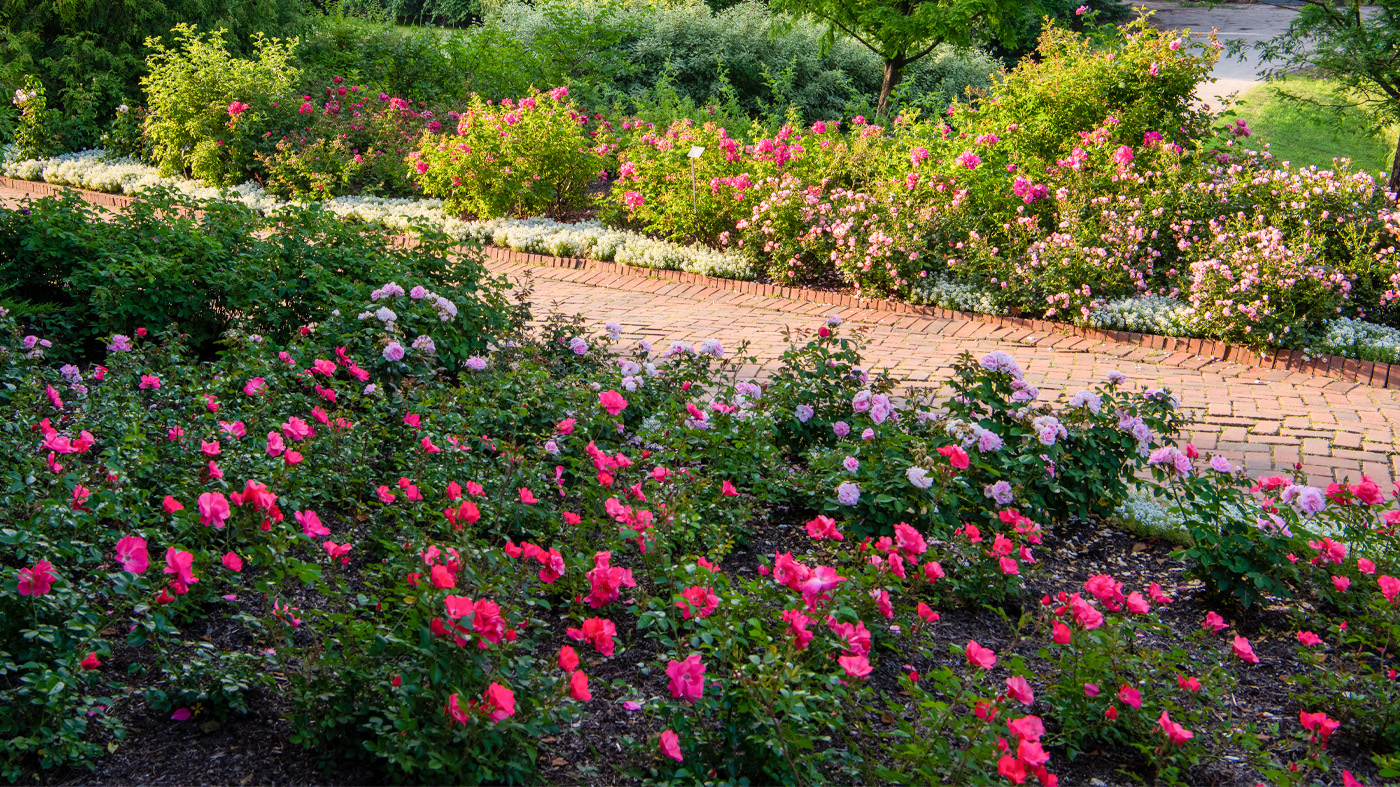

Plant Profiles
Roses: A brief history
 June is the month of total abundance in the rose garden, even if your garden contains only one rose.
June is the month of total abundance in the rose garden, even if your garden contains only one rose.
Whether growing hybrid teas, shrub roses, climbers, old fashioned heirlooms, or even the tiniest of the miniature roses, gardeners know this is the month they all come into bloom. Some might say it is a cruel twist of floral fate to have all this excess in one month. For the gardener who possesses heirloom roses that bloom only once in the summer, these few weeks are cherished. For the gardener who values versatility at the back of the border, this is the month when the shrub roses begin their season-long flower display. And for the hybrid tea aficionado, June most certainly is high season. Even though most hybrid teas will bloom throughout the summer, nothing can match the power of their June flowers.
The allure of roses is a universal one — and certainly not restricted to gardeners alone!
This queen of flowers has played a major role in poetry, religion, art, and literature; music, medicine, fashion design, perfume, and home decoration — even in cuisine. It is an ancient flower, grown for thousands of years throughout Asia and the Orient before it ever made an appearance in the Western world.
Empress Josephine Bonaparte, wife of Napoleon, was a passionate rose lover and collector. While her husband was acquiring an empire, she was acquiring property, gardeners, and 250 different roses from all over the world to add to the gardens of Malmaison, her chateau retreat outside Paris. The famed botanical illustrator Pierre-Joseph Redoute meticulously painted 117 of Josephine’s roses in his landmark watercolor book, Les Roses. His renditions are, even today, considered classic references to the differences in rose types.
Classification
To bring order to the wild world of roses, the American Rose Society has classified all roses into two major categories: old garden roses (sometimes called antique or heirloom roses) and modern roses. The old roses are those that were cultivated in distinct classes prior to 1867, and the modern roses are those that followed. The year 1867 is an important one in rose history, since it marks the debut of the hybrid tea rose.
Adaptations
To have survived for thousands of years, the old garden roses possessed desirable traits that allowed them to adapt to increasingly difficult situations. They were low maintenance; grew well in a variety of soil conditions; required little, if any, pruning; survived winters with no extra protection; and were very disease and insect resistant. And they most certainly were fragrant. With credentials like those, what was there to improve upon?
Specifications
Most old roses bloomed only once in the summer. Many were shrubby (one might even say overly vigorous), sprawling plants that required room to roam. The blossoms, too often single instead of the more desirable double, were not showy enough to last as cut flowers. The unfolding buds were not attractive — nothing to compare to the beauty of the hybrid tea bud unfolding. The old-fashioned plants needed refinement and shaping. The flowers were restricted to shades of pink. Hybridizers longed to expand the shape and color range of the buds, petals, and the final open flower. And so began the process of hybridizing that has produced thousands of modern cultivars.
Characteristics
Unfortunately, one of the characteristics most closely associated with roses, fragrance, was hybridized out of the modern roses in favor of flower color and shape. It is felt that roses exude seven basic fragrances: rose, nasturtium, violet, apple, lemon, clove, and tea. The antique roses typify the "classic" rose fragrance since, of the seven scents, they possess the rose scent in most cases. What a disappointment to bend to smell a gorgeous rose only to find it has no scent! Hybridizers are recognizing once again the value of fragrance, pressured in part by consumer demand. Rose experts have commented that roses release their most intense fragrance when the blossoms are half open. In the morning, while a slight touch of dewy moisture lingers on the petals, the warming effect of early sun will encourage the release of fragrant oils from the petals and, occasionally, the leaves. Hot sun, rain, wind, and high humidity work against fragrance.
Modern Rose
Hybrid teas are only one of the modern rose types. In this contemporary class are the floribundas, polyanthas, grandifloras, climbers, and shrubs. The shrub or landscape roses are gaining in popularity, certainly in our area, due to their adaptability and winter hardiness. Exhibiting many of the good points of the old garden roses, today’s modern shrubs are much more resistant to black spot, fungal problems, and insect attack. Requiring very little, if any, winter protection after their first year, their hardiness allows them to bloom prolifically without the spraying, coddling, fertilizing, and fussing that are the hallmarks of the hybrid teas. The issue of hardiness applies to more than making it through the winter. In the event of serious Japanese beetle infestation, the hardy roses (that is, the shrubs) will be the ones most able to withstand attack. From a design point of view, shrub roses are easily integrated into mixed borders, evergreen areas, perennial beds, and especially cottage gardens.

But words can only paint part of this picture. One of these fine glorious June days, come, stop, and smell the roses at the Chicago Botanic Garden. There are more than 5,000 waiting for you.

